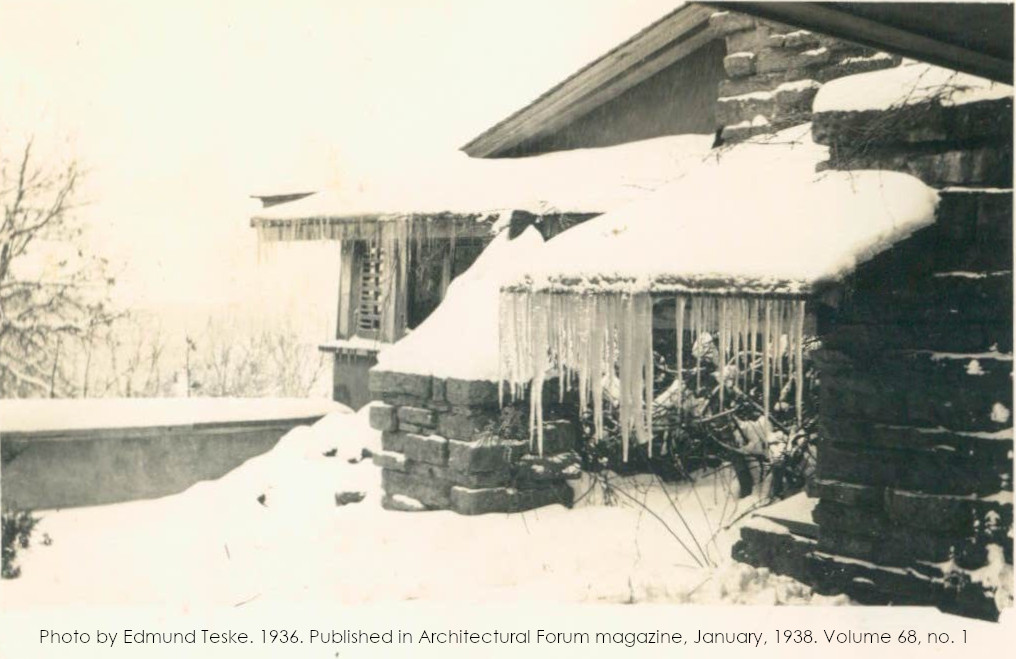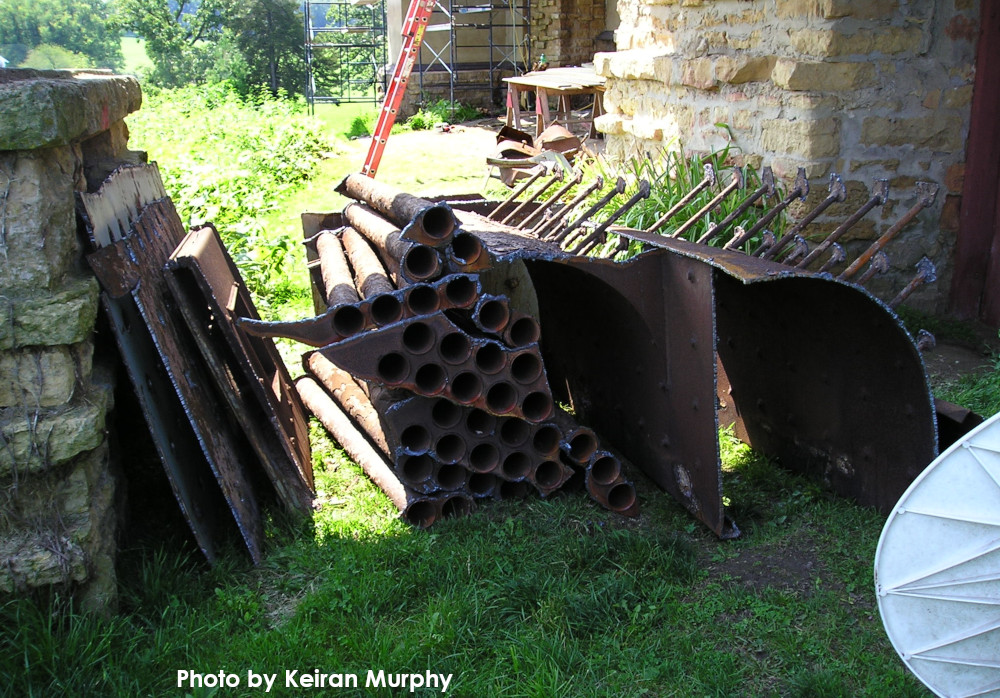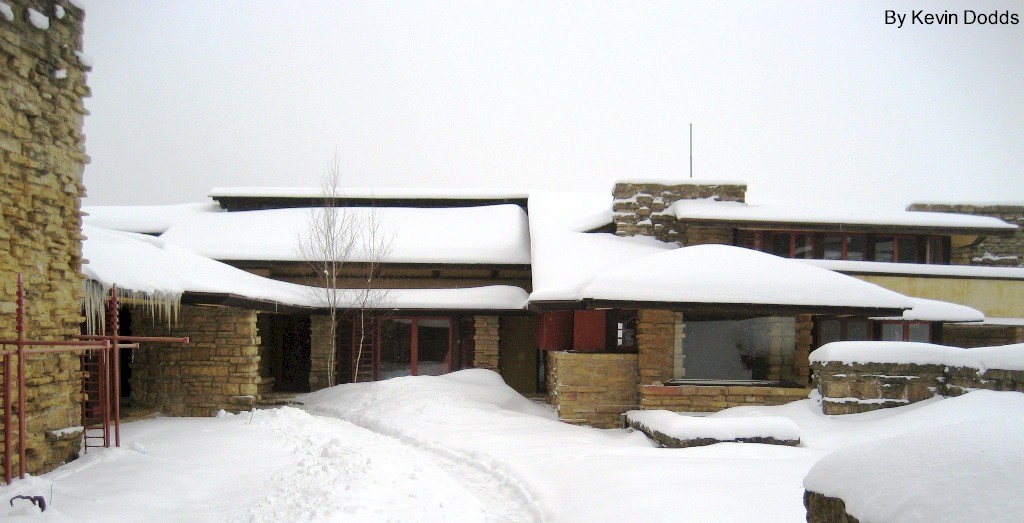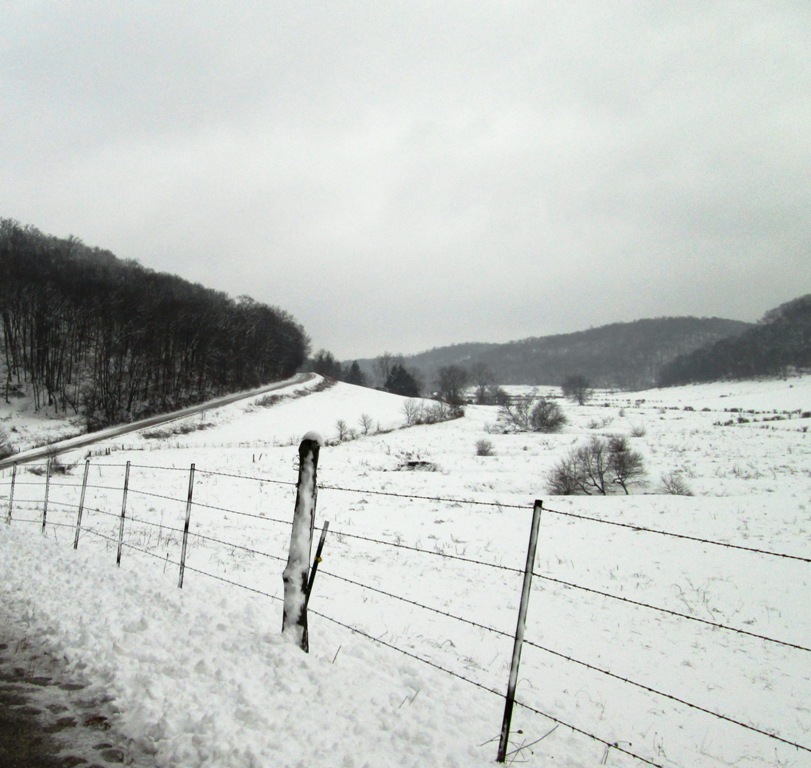Reading Time: 5 minutesA photograph I took in 2007 while the Preservation Crew removed the boiler from Taliesin’s living quarters. Taliesin’s living room is one floor up and to the right.
Didn’t I write in here about the time there was blue smoke inside Taliesin’s Living Quarters one fall day in 1995?
[searches this blog for the words “blue” and “smoke”, but to no avail.]
I don’t mean blue smoke like decorative smoke that’s supposed to go along with cartoon Taliesin smurfs.1 No: this blue smoke filled the living quarters one day after the heat was turned on.
So, while I don’t know the details, this post is going to be about the new heating system that was installed at Taliesin. Because it’s the first weekend of September and I remember the fact that it’s going to get cold again.
As I recall,
it happened one day in the autumn of 1995. I arrived at Taliesin’s front door with my House Tour guests and was greeted by the House Steward. She told us it might be a little chilly because they’d turned off the heat. That was because blue smoke filled the house after they turned it on that morning.
I checked online to find out what “blue smoke” coming from a heating system means. “Just Answer” told me the smoke was from an “accumulation of dust that can cause fumes.” I read that and went, “Well, sh*t – if that’s all it was, we should have just kept using the heater.”⇐and right there is why it’s best for Taliesin that I stayed in research and writing instead of MAKING MATERIAL DECISIONS ON FRANK LLOYD WRIGHT’S HOME.
Following the blue smoke
the Preservation Crew investigated the system. While there wasn’t a sign of imminent catastrophe, they concluded that the presence of smoke and fumes was not a matter of just getting a new “panel” and fixing things easily.
I don’t know the age of the former radiators that comprised the heating system at Taliesin’s Living Quarters, but they were old.2 Maybe they didn’t date to Frank Lloyd Wright’s lifetime (he died in 1959), but, since I’m talking about Taliesin in the mid-1990s? Possibly.
Therefore,
Preservation turned off the heat inside Taliesin’s living quarters. They understood that the heat could not be turned on again until many problems were solved,
like, what I wrote about in “A Slice of Taliesin” is only a small part
and an appropriate system was researched, prepared, and acquired.
In fact, they didn’t even remove the old boiler until things veered closer to getting heat in the building.
That happened in 2007.
That’s when I took the photograph of the dismantled boiler at the top of this post.
Just so you know: NO, the boiler that was removed was not “the boiler” where Julian Carlton hid in 1914 – what the hell are you thinking?
Following this,
the only way the Taliesin Living Quarters were heated was through little space heaters placed in the rooms.
Hence, part of the reason that I’m still attuned to the question, “Did Wright ever live in Wisconsin in the winter?”
Wright had radiators from the beginning. Yet, people didn’t usually see them because the little heaters drew their attention.
Obviously, the space heaters were only plugged in/turned on when tours were going on. Which saved money and ensured that Taliesin House Stewards could monitor the devices.
Man,
I felt for the House Stewards and the tour guides when the weather was cold. I didn’t have to go to the house every day, since I hadn’t worked full-time in the tour program since 2002. But it was hard to talk about Wright’s genius in his house with little electric heaters. Although, while they didn’t make the space nice and toasty, they gave the “aura” of heat. The sense that, “Well, we’re doing the best we can.”
And so,
since Taliesin’s living quarters didn’t have heat until 2014, the building was shut down after October 31.3 In order to prepare for the winter, the tour staff moved the artifacts, rugs, and furniture into separate areas. The work by the tour staff took several days in November, and two weeks in the spring.
I mentioned “House opening” in my post, “Physical Taliesin history“.
Here’s a hint on what Taliesin’s Living Room looked like when it was almost set:
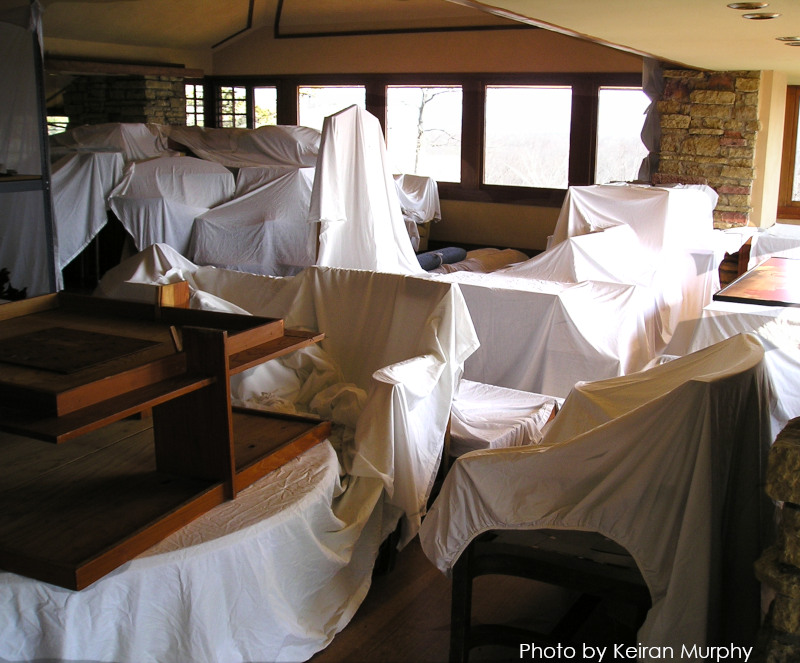
Looking (plan) northwest in Taliesin’s Living Room. Taken by me on the first day of House opening in 2006.
I confess that seeing this photograph squeezes my heart. Not in a good way. Man, I hated House opening.
Honestly,
I sometimes doubted that I’d ever see heat in Taliesin again. Not that the folks in Preservation weren’t making lists and slowly going through improvements, but I had worked there so long while things changed incrementally, and tour guides/staff still gave tours when outside temps were 40F (4.45C) the night before.
I felt like, “You don’t care about us!!!”
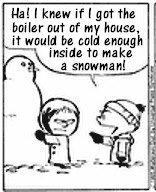
My alteration of a panel in a Calvin and Hobbes cartoon detailing how I felt while opening Taliesin in the spring following the removal of the boiler in Taliesin’s living quarters. I called these altered cartoons “Frank and Hobbes”.
so.
I just realized
that the managers in the Preservation Crew were speaking like the pilot on your airplane while you’re waiting to take off. You get into your seat and they tell you you’ll be leaving shortly. Then sometimes you seem to sit there interminably on the “apron” before moving. But the pilot always has a positive attitude, telling you that you will be on your way in just a moment. Even when you aren’t. I guess with the Preservation at Taliesin, the crew did enough work (over 20 years) to remove the airplane chocks, then get onto the taxiway for takeoff.
You can get some more understanding by looking at a Preservation Report first loaded onto Taliesin Preservation‘s website in 2011.
Altho,
I just looked at the Wayback machine,4 and they don’t have the Preservation Report. Here, you can have my copy of the issue I’m thinking of.
p.s.: these were written by Ryan Hewson. He works for the Frank Lloyd Wright Foundation as the Preservation Director of Taliesin (Wisconsin). He had me proofread these, which I why I had an electronic copy.
The installation of the geo-thermal system at Taliesin was summarized here. And here’s an “after” photograph from the boiler room:
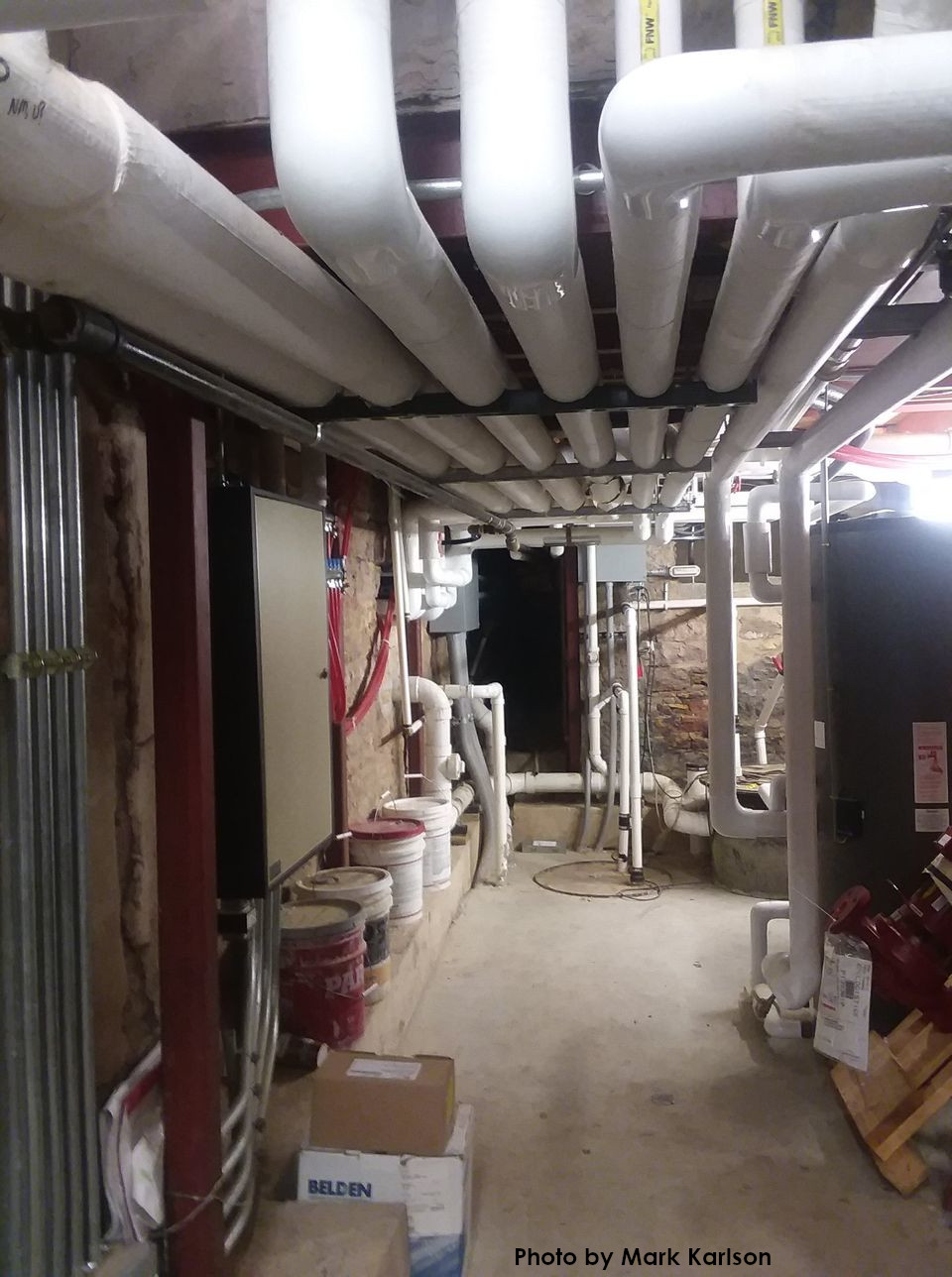
If that geothermal system seems familiar, it’s because I mentioned it in, “Why Did You Have to do That, Mr. Wright?!“
To reiterate:
- As I remember it, the heat was turned off in 1995,
- The radiator was removed in 2007,
- The geo-thermal heating system was fully installed and switched on in 2014.5
First published September 4, 2022.
Notes:
1 Yes, I did just spend time imagining Taliesin Blue Smurfs: Smurfs with canes, porkpie hats and capes. Did you?
2 Here’s information for those working in Preservation on the Taliesin estate: the large hole in the Hillside Theatre foyer is NOT a drain for water.
Since almost no guides were around when hot air used to come out of the vent, I’ve heard many “newer” guides (I mean, those who came after 1997) wonder out loud if that was for water.
That hole used to be a hot air vent. It worked when I first gave tours. You would walk in on a chilly day in September or October, and hot air came out of that hole. I think it helped people emotionally to know that Wright tried to make the space warm. I mean, it’s all stone and has no insulation.
3 While the Frank Lloyd Wright Foundation is working on Wright’s Hillside Theater, there’s still no heat inside most of the rest of the Hillside School building.
4 Here’s my post about the Wayback Machine.
5 It wouldn’t have made sense to move things ahead of time, since Preservation was just going to have to do a bunch of work later.

